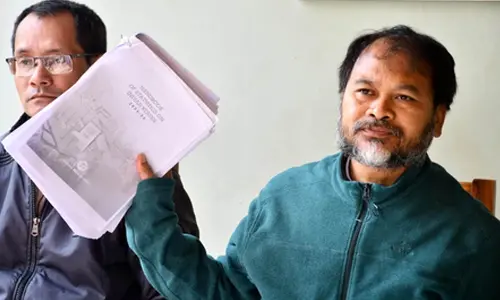Yoga for Osteoarthritis

Imbibe the practice of Yoga early on as a discipline to protect yourself from this hazardous disease. Along with the practice of yoga, include milk consumption in your everyday diet as well as the intake of nutritious food. Taking long walks will help to shift pressure from the joints and reduce pain. This increases your balance and strength, thus improving your overall health
A common form of arthritis, osteoarthritis or OA is a disease of the joints where healthy cartilage that cushions bones at the joints breaks down through wear and tear.
This leads to stiffness, pain, swelling, and a limited range of joint motion. Fortunately, lifestyle changes with gentle yoga practice, nutritious food, plenty of rest and a healthy state of mind will surely balance the pressure of arthritis on your body.
Please get your doctor's approval before starting any new exercise regimen. Pranayama techniques such as Kapal Bhati, Anulom Vilom and Meditation techniques like Super Power meditation and Jal Dhyan are also recommended:
Dandasana (Staff pose)
Formation of the posture
• Sit down on the ground and begin with Sukhasana
• Ensure that your back is erect
• Stretch your legs out in front of you. Your legs must be parallel to each other, and toes should be pointed upwards
• Tighten the muscles of your pelvis, thighs and calves
• Align your head in such a way that the crown faces the ceiling and the focus of your gaze is forward. This will automatically straighten and lengthen your spine
• Place your palms beside your hips on the floor. This will support your spine and also relax your shoulders.
• Hold the asana for a while
Benefits
• This asana helps to strengthen the muscles on your back
• It also helps to stretch the chest and the shoulders
• Improves your posture
• It stretches out the muscles of the lower body
• The abdomen is stretched and strengthened as well
• It is known to cure sciatica and asthma
• This asana helps to focus and calm the mind. When paired with proper breathing, it relieves stress and helps enhance concentration
Baddha Konasana (Bound angle pose)
Formation of the posture
• Begin by assuming Dandasana
• Fold your legs and bring the soles of your feet together
• Pull your heels closer to your pelvis
• Gently push your knees down
• Empty air from your stomach, lean your upper body forward and place your forehead on the floor
Benefits
• Makes hip flexors flexible
• Strengthens pelvic region
• Mobilizes the knee caps
Samasthithi
Formation of the posture
• Stand with your feet together
• Stretch your arms out beside your body and allow them to hover without making contact
• Gently close eyes
• Relax the body
Benefits
• It prepares your body and calms your mind
• It improves overall body posture
• Creates self-awareness
Word of Advice :Try to balance your body weight equally on both feet without leaning onto one.
Anulom Vilom (Alternate nostril breathing)
Formation:
Sit in a comfortable position of Sukhasana, Ardha Padmasana, Vajrasana or Poorna Padmasana. Keep your back straight, shoulders relaxed and close your eyes to focus on your breath. Place your palms on your knees facing upward (in Prapthi Mudra)
Technique:
Gently close your right nostril with your thumb, inhale into your left nostril and close it, letting the breath out through the right nostril. Then inhale through your right, closing it to exhale only through your left. This makes one cycle.
Kapal Bhati
In Sanskrit, 'Kapal' means skull and 'bhati' means 'shining/illuminating'. Therefore, this Kapalbhati Pranayam is also known as Skull Shining Breathing Technique.
Method
• Sit in any comfortable pose (such as Sukhasan, Ardhapadmasan or Padmasana)
• Straighten your back and close your eyes
• Place your palms on your knees facing up (in Prapthi Mudra)
• Inhale normally and focus on exhaling with a short, rhythmic and forceful breath
• You can use your stomach to forcefully expel all the air from the diaphragm and lungs by compressing it
• Inhalation should happen automatically while you decompress your stomach
Jal Dhyan (Water meditation)
This is a type of meditation on water (drinking water). Effective Jal Dhyan is done by offering positive affirmation to water before you can drink it.
Statements or affirmations such as 'Water is good for me', 'It is pure', etc., will cleanse the water energies and bring out its most beneficial properties. Also, ensure that before you drink water, you seat yourself and drink it with relish and gratitude.
Super Power Meditation
To practice this, seat yourself on a peak of the mountain in Sukhasana or any other comfortable pose that gives you the shape of a pyramid. The intention is to sit in the shape of mountain atop a mountain.
In this position, you need to visualize a reverse triangular shield in your chest and then meditate.
During the meditative process, with every inhale, this shield allows you to welcome all the positive energies of the world into you. And, as you exhale you release unwanted toxins, miseries, and negativity from within you.














